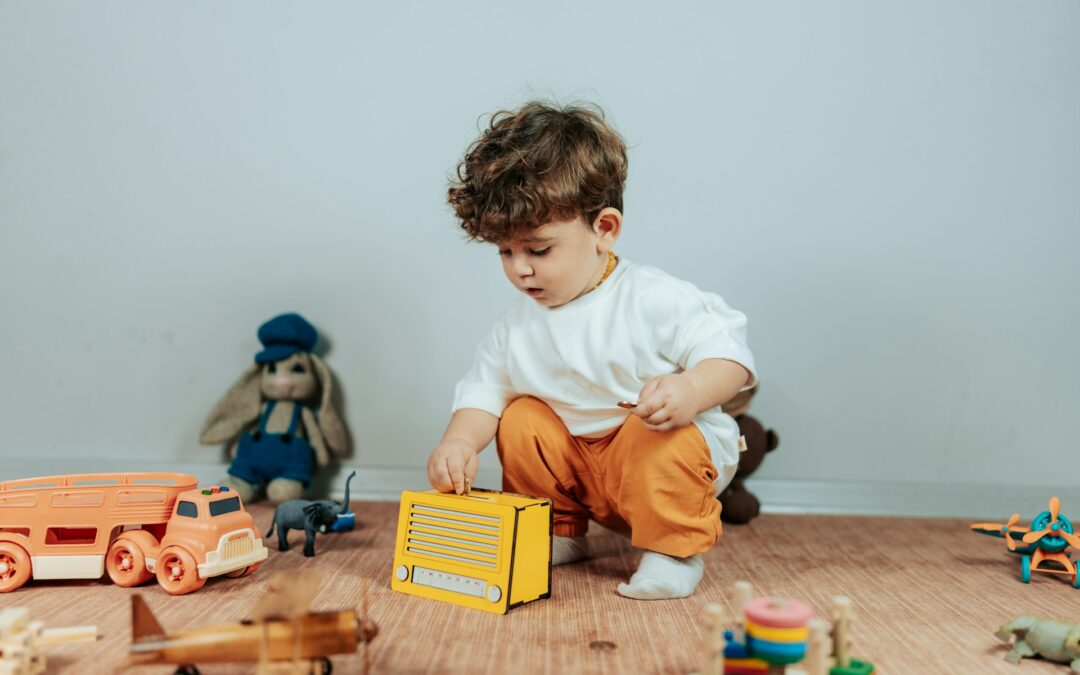Connecting with nonverbal kids might seem challenging, but with the right strategies, it’s easier to understand their unique way of communicating. Nonverbal children use body language, gestures, and facial expressions to share their thoughts and feelings. By paying attention to these signals, parents and caregivers can better meet their needs.
It’s important to use tools and create environments that help nonverbal children express themselves more openly. With patience and encouragement, kids feel more comfortable trying to communicate. This support can make a big difference in their happiness and well-being.
Building strong bonds with nonverbal kids is essential. Spending quality time together and engaging in activities that they enjoy helps foster trust and enhance communication. With these tips, families can strengthen their connections and promote an atmosphere of understanding and love.
Understanding Nonverbal Communication
Nonverbal children often use a variety of ways to communicate without speaking. Gestures, facial expressions, and body language are key channels through which they express themselves. Recognizing and understanding these cues are crucial for connecting with these children and understanding their wants and needs.
Facial expressions can be very telling. A smile can indicate happiness, while a frown may show disagreement or discomfort. Paying attention to these subtle changes in expression provides insights into what the child might be feeling.
Gestures also play a significant role. A child may point to what they want or push something away if they do not like it. Waving, nodding, or shaking their head are common gestures used to communicate yes or no. Observing these actions closely can help caregivers respond appropriately to a child’s requests.
Body language conveys important information, too. Children might tug at an adult’s sleeve to gain attention or turn their body away when they want to end an interaction. Body posture and movement offer clues on whether a child is interested in engaging or needs some space.
Understanding and interpreting these nonverbal cues foster better communication and connection. By responding to these signals accurately, caregivers support the child’s attempts to communicate and create an environment of understanding and empathy.
Utilizing Visual and Augmentative Tools
Visual and augmentative tools play a top role in helping nonverbal children express themselves. These tools act as bridges to communication, making it easier for them to share their thoughts and feelings.
Here are some effective visual aids and devices:
1. Picture Cards: These cards display images representing everyday items or actions. By selecting a card, a child can communicate their needs, like wanting a snack or a specific activity.
2. Communication Boards: A board with various pictures or symbols lets children point to express what they want or how they feel. This tool helps in forming simple sentences, making it easier to understand their needs.
3. Tablets with Communication Apps: Technology like tablets equipped with special apps allows children to tap pictures or icons to form phrases. These apps often use voice output, which provides spoken communication for the child.
Introducing these tools requires patience and consistency. Start by incorporating them into regular routines, like mealtime or playtime. Gradually expand their use to other parts of the day, ensuring the child gets familiar with expressing through these mediums.
Regular use and positive reinforcement encourage children to rely more on these tools. As they gain confidence in using them, caregivers will notice a significant improvement in communication and understanding. These tools are not only aids but also empower nonverbal children to have their voices heard.
Creating a Supportive Environment
Setting up a supportive environment is key to encouraging communication in nonverbal children. A space that feels safe and comfortable allows them to express themselves freely and confidently. Creating quiet areas filled with familiar objects can lessen anxieties and promote interaction.
Begin by identifying a spot in your home that can be a dedicated communication space. This area should be calm and free from distracting noises. Soft furnishings, like cushions or bean bags, add comfort and make the space inviting. Including familiar items or favorite toys can also help the child feel relaxed.
Filling this area with objects that encourage interaction is essential. These might include sensory toys, communication boards, or picture cards, all readily available for the child’s use. Arranging these items in an accessible manner can make them more appealing and easier for the child to interact with.
Patience and encouragement play a vital role in fostering communication. Encouraging small attempts to communicate, no matter how slight, boosts confidence. Show patience by giving the child plenty of time to express themselves without pressure. Celebrate their efforts and successes to reinforce positive communication experiences.
An environment that supports their needs helps children feel more comfortable sharing their thoughts. By showing understanding and patience, parents and caregivers can make a big difference in a child’s ability to communicate.
Building Strong, Trusting Relationships
Developing strong, trusting relationships is a cornerstone in improving communication with nonverbal children. Positive and consistent interactions help children feel secure and understood. When trust is established, children are more likely to engage and express themselves.
Spend quality time together in ways that build connections without the need for words. Engage in activities the child enjoys, such as playing games, drawing, or simply spending time side by side. These moments create shared experiences that strengthen bonds and understanding.
Consistency in interactions demonstrates reliability and helps build trust. This reliability helps children recognize patterns, like knowing that mealtimes or bedtime routines are predictable and comforting. Through routine, children understand what to expect, which can lessen anxiety.
Listening and responding appropriately to the child’s nonverbal cues strengthens these bonds. Acknowledging their messages, whether through gestures or facial expressions, shows you value their attempts at communication. This positive feedback encourages them to interact more frequently.
Quality time, patience, and consistent responses can greatly enhance the relationship with your child. These interactions lay the foundation for better communication and a deeper understanding between you both.
Conclusion
Creating an environment that supports communication in nonverbal children is vital for their development. By recognizing nonverbal cues, using visual tools, setting up supportive spaces, and focusing on building trusting relationships, caregivers can make significant strides in helping these children express themselves. Each child is unique, and patience and creativity are required to find the best methods that work for them. Encouraging various ways of communication enriches their lives and strengthens the bond with those who care for them.
If you want to enhance communication with nonverbal children, consider contacting our Chicago autism center, Strive ABA Consultants. Our team is dedicated to offering evidence-based strategies that aid in breaking communication barriers for children with autism and other developmental disabilities. We are here to support both you and your child in embracing their full potential.


